Sphinx luscitiosa
Sphinx luscitiosa
Clemens, 1859
Canadian Sphinx Moth
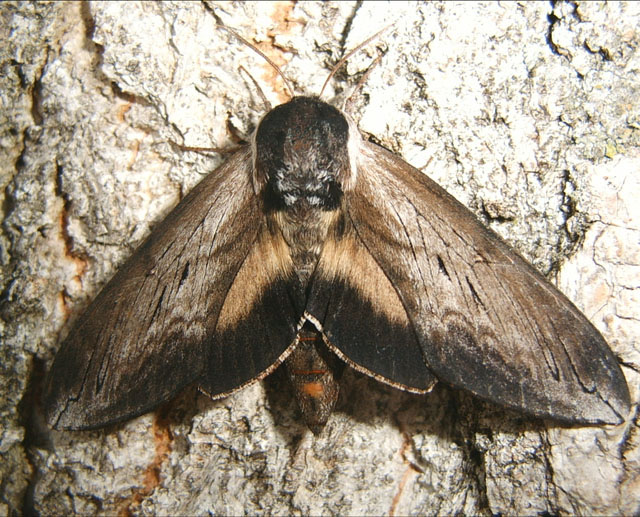
Sphinx luscitiosa female courtesy of Jonathon Tubbs.
This site has been created by
Bill Oehlke at oehlkew@islandtelecom.com
Comments, suggestions and/or additional information are welcomed by Bill.
TAXONOMY:
Family: Sphingidae, Latreille, 1802
Subfamily: Sphinginae, Latreille, 1802
Tribe: Sphingini, Latreille, 1802
Genus: Sphinx Linnaeus, 1758 ...........
Species: luscitiosa Clemens, 1859
|
MIDI MUSIC
.....It's a Wonderful World.....
copyright C. Odenkirk
ON.OFF
<bgsound src="world.mid" LOOP=FOREVER>
|
DISTRIBUTION:
The rare Clemen's Sphinx Moth,
Sphinx luscitiosa
(Wing span: 2 1/4 - 3 1/8 inches (5.7 - 7.8 cm)),
flies from Nova Scotia and New Brunswick south to New Jersey; west through Michigan,
Wisconsin (specimen type locality), and the northern plains to
Alberta, Saskatchewan and Montana; south to Utah. It has been taken
as far north as the Yukon. I have never seen them here on PEI., in eastern Canada.
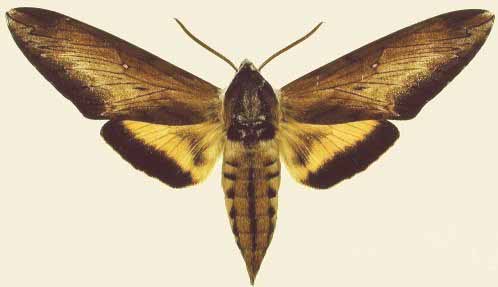
Sphinx luscitiosa male courtesy National Resources Canada.
The upperside of the forewing is yellowish gray in males and
pale gray with a faint yellow tint in females. In both sexes, the
dark border on the outer margin widens as it approaches the inner
margin.
The upperside of the hindwing is deep yellow in males, pale yellow in
females; both with a wide black border.
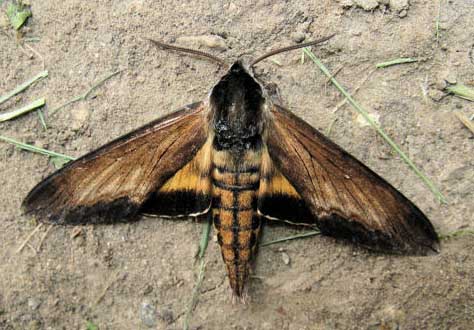
Sphinx luscitiosa male, Door County, Wisconsin,
6:05pm, July 3, 2012, courtesy of Tim Borski.
Edna Woodward alerted me to these images of the rarely photographed live male Sphinx luscitiosa, and photographer Mike Reese has granted me permission
to post them. They are copyright protected by Mike and should not be reproduced without his permission. The male of this species nectars midday, will also imbibe
juices from rotting fish, and has also been seen during twilight hours. Only the female occurs at lights, and she has not been reported nectaring
during the day.
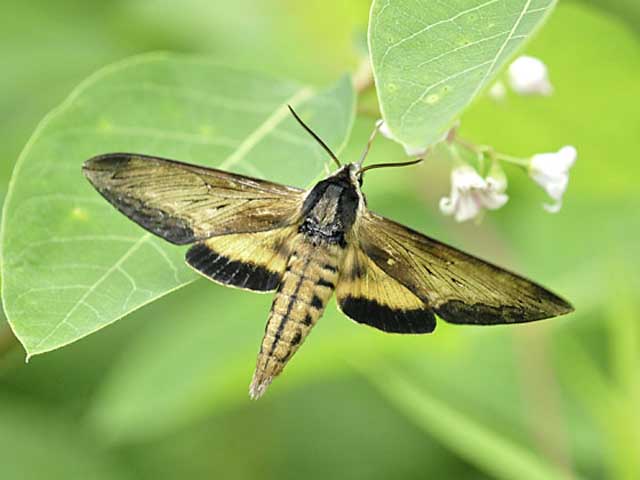
Sphinx luscitiosa male, Tie Mill Road, Florence County, Wisconsin,
nectaring on Apocynum species, 11:45am, June 24, 2012, courtesy/copyright of Mike Reese.
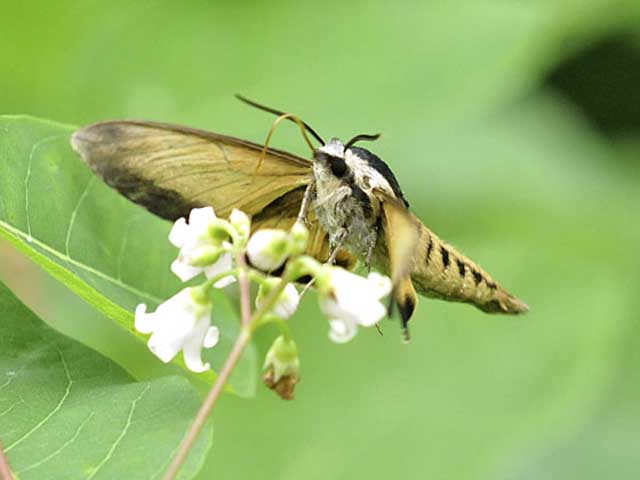
Sphinx luscitiosa male, Tie Mill Road, Florence County, Wisconsin,
nectaring on Apocynum species, 11:45am, June 24, 2012, courtesy/copyright of Mike Reese.
FLIGHT TIMES:
Sphinx luscitiosa adults fly as a
single brood from June-July. This is possibly a diurnal or crespuscular species (males), and males are seldom taken at lights.
The males are more likely to be seen feeding at flowers near midday or near dawn or dusk. Males have also been seen during the day feeding
on juices from rotting fish.
Thus far, females have only been recorded as taken at lights.
ECLOSION:
Pupae probably wiggle to surface from
subterranean chambers just prior to eclosion.
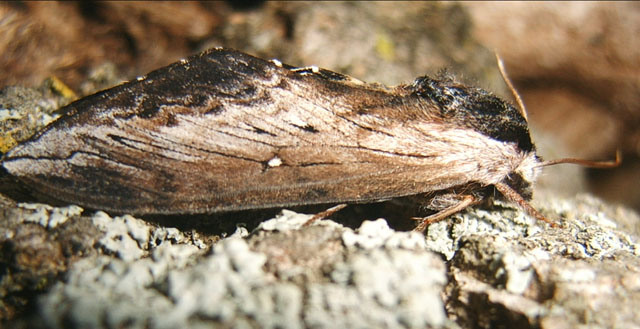
Sphinx luscitiosa female courtesy of Jonathon Tubbs.
SCENTING AND MATING:
Females call in the males with a
pheromone released from a gland at the tip of the abdomen.
Calling begins at dusk. Adults nectar at a variety of flowers including Russian-olive.
Moths may also feed on decomposing fish.
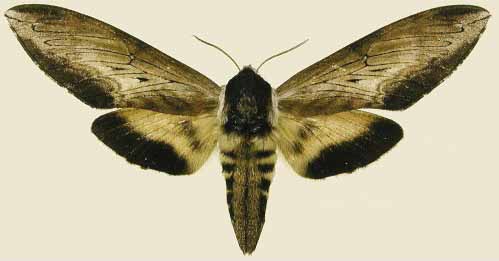
Sphinx luscitiosa
female courtesy National
Resources Canada.
EGGS, LARVAE, PUPAE:
Larval hosts are willow
(Salix), poplar (Populus), birch (Betula),
apple (Malus), ash (Fraxinus), waxmyrtle
(Morella), and northern bayberry.
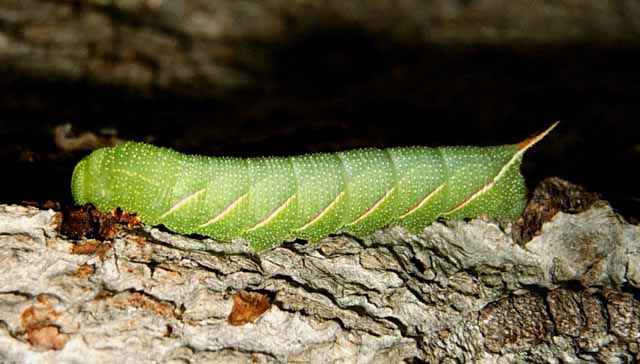
Sphinx luscitiosa, fourth instar, northern Michigan,
courtesy of Jonathan Tubbs.
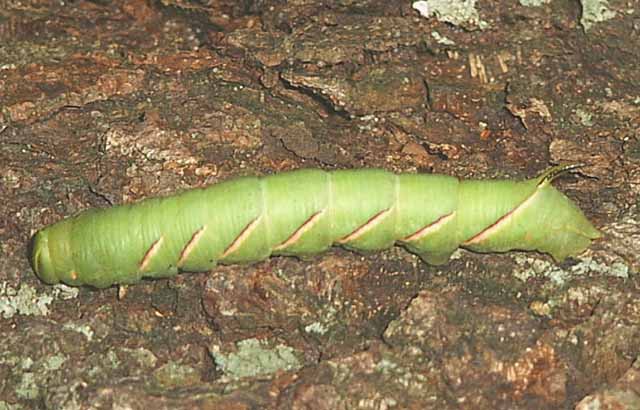
Sphinx luscitiosa, fifth instar, northern Michigan (Otsego County),
courtesy of Jonathan Tubbs.
The larval skin is much smoother in the final instar, having lost the
grainy appearance evident in the fourth instar.
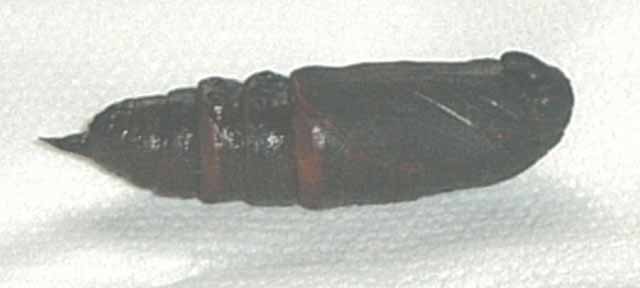
Sphinx luscitiosa, pupa, northern Michigan,
courtesy of Jonathan Tubbs.
Return to Sphingidae Index
Return to Sphingini Tribe









